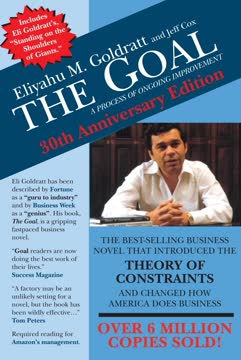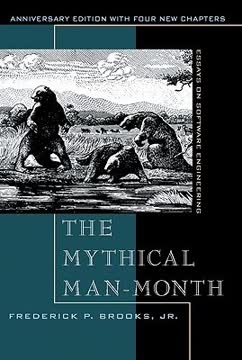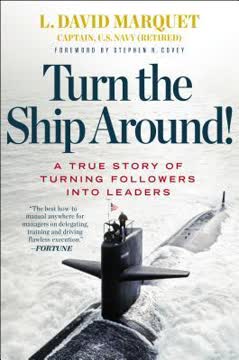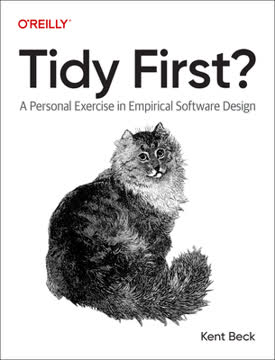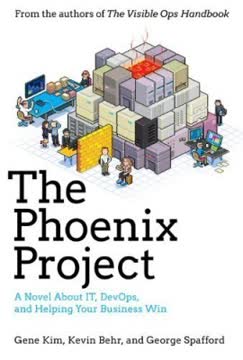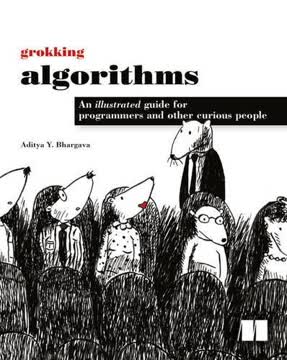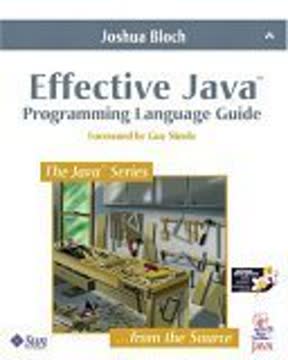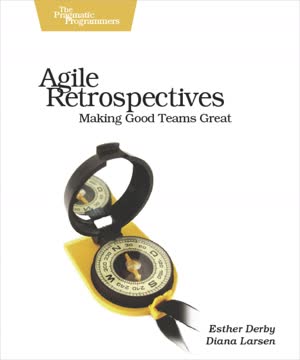نکات کلیدی
1. بازنگریها برای بهبود و تطبیق مستمر تیم ضروری هستند
بازنگریها یادگیری کل تیم را ممکن میسازند، به عنوان کاتالیزور تغییر عمل میکنند و اقداماتی را ایجاد میکنند.
بهبود مستمر. بازنگریها فرصتی ساختاریافته برای تیمها فراهم میکنند تا درباره کار، فرآیندها و تعاملات خود تأمل کنند. با بررسی منظم آنچه خوب پیش رفته و آنچه میتواند بهبود یابد، تیمها میتوانند روشهای خود را تطبیق دهند، مسائل را حل کنند و عملکرد خود را ارتقا دهند. این رویکرد تکراری به بهبود به تیمها کمک میکند تا چابک و پاسخگو به نیازهای متغیر پروژه باقی بمانند.
مزایای ملموس. تیمهایی که به طور مداوم بازنگریها را برگزار میکنند، اغلب شاهد:
- بهبود بهرهوری از طریق روشهای بهتر
- افزایش قابلیتها با اشتراکگذاری دانش اعضای تیم
- خروجی با کیفیت بالاتر با پرداختن به مسائل مکرر
- افزایش ظرفیت با تمرکز بر کارهای با ارزش بالا
تأثیر فرهنگی. فراتر از بهبودهای قابل اندازهگیری، بازنگریها فرهنگی از باز بودن، اعتماد و مسئولیت مشترک را تقویت میکنند. آنها اعضای تیم را تشویق میکنند تا نگرانیها را بیان کنند، ایدهها را به اشتراک بگذارند و بر روی راهحلها همکاری کنند، که منجر به رضایت شغلی بالاتر و انسجام تیمی میشود.
2. رویکرد ساختاریافته بازنگریهای مؤثر را تضمین میکند
صحنه را آماده کنید، دادهها را جمعآوری کنید، بینشها را تولید کنید، تصمیم بگیرید چه کاری انجام دهید، بازنگری را ببندید.
ساختار پنجمرحلهای. این چارچوب جریان منطقی برای بازنگریها فراهم میکند و اطمینان میدهد که تیمها همه جنبههای لازم را پوشش میدهند:
- صحنه را آماده کنید: محیطی متمرکز و امن برای بحث باز ایجاد کنید
- دادهها را جمعآوری کنید: حقایق و احساسات درباره دوره کاری را جمعآوری کنید
- بینشها را تولید کنید: دادهها را تحلیل کنید تا الگوها و علل ریشهای را کشف کنید
- تصمیم بگیرید چه کاری انجام دهید: اقدامات و آزمایشها برای بهبود را انتخاب کنید
- بازنگری را ببندید: یادگیریها و تعهدات را تقویت کنید
کاربرد انعطافپذیر. این ساختار میتواند برای زمانبندیهای مختلف، از بازنگریهای تکراری یکساعته تا بررسیهای پروژه چندروزه، تطبیق یابد. کلید این است که پیشرفت منطقی در هر مرحله حفظ شود و به تیمها اجازه دهد به طور مؤثر از تأمل به عمل حرکت کنند.
نتایج مداوم. با پیروی از این ساختار، تیمها به احتمال بیشتری به نتایج معنادار از بازنگریهای خود دست مییابند و از مشکلات رایج مانند بحثهای بیتمرکز یا عدم تولید نتایج قابل اقدام جلوگیری میکنند.
3. جمعآوری دادههای متنوع درک مشترک ایجاد میکند
بدون داده، تیم در حال حدس زدن درباره تغییرات و بهبودهایی است که باید انجام شود.
جمعآوری داده جامع. بازنگریهای مؤثر هم دادههای عینی و هم دادههای ذهنی را جمعآوری میکنند:
- دادههای سخت: رویدادها، معیارها، آیتمهای کاری تکمیلشده
- دادههای نرم: احساسات، ادراکات، پویاییهای تیم
تکنیکهای تجسم. ابزارهایی مانند جدولهای زمانی، هیستوگرامهای رضایت و رادارهای تیم به تیمها کمک میکنند دادهها را تجسم کنند و شناسایی الگوها و روندها را آسانتر میکنند. این نمایشهای بصری اغلب بینشهایی را آشکار میکنند که ممکن است در بحثهای ساده از دست بروند.
دیدگاههای متنوع. جمعآوری داده از همه اعضای تیم تصویری کامل از دوره کاری ارائه میدهد. این رویکرد فراگیر به آشکارسازی دیدگاهها و تجربیات مختلف کمک میکند و منجر به بینشها و راهحلهای جامعتری میشود.
4. تولید بینشها دادهها را به دانش قابل اقدام تبدیل میکند
تولید بینشها به تیم اجازه میدهد تا به عقب برگردد، تصویر بزرگ را ببیند و به علل ریشهای بپردازد.
فعالیتهای تحلیلی. تکنیکهایی مانند طوفان فکری، نمودارهای استخوان ماهی و پنج چرا به تیمها کمک میکنند تا فراتر از مشاهدات سطحی حرکت کنند و علل و الگوهای زیرین را کشف کنند. این فعالیتها تفکر خلاق را تشویق میکنند و به تیمها کمک میکنند تا ارتباطات بین نقاط داده مختلف را ببینند.
کاوش مشترک. با همکاری در تحلیل دادهها، تیمها درک مشترکی از چالشها و فرصتهای خود توسعه میدهند. این فرآیند تولید بینش جمعی اغلب به راهحلهای نوآورانهتر و مؤثرتری نسبت به تحلیل فردی منجر میشود.
تمرکز بر علل ریشهای. شناسایی علل ریشهای، به جای فقط علائم، به تیمها اجازه میدهد تا به مسائل بنیادی که ممکن است بر جنبههای مختلف کارشان تأثیر بگذارد، بپردازند. این رویکرد به بهبودهای مؤثرتر و پایدارتر منجر میشود.
5. تصمیمگیری درباره اقدامات بینشها را به بهبودهای ملموس تبدیل میکند
تصمیمگیری درباره اقدامات تمرکز تیم را به تکرار بعدی منتقل میکند.
اولویتبندی. تیمها باید بر تعداد محدودی از بهبودهای با تأثیر بالا تمرکز کنند تا از غرق شدن خود جلوگیری کنند. تکنیکهایی مانند رأیگیری نقطهای میتوانند به تیمها کمک کنند تا اقدامات بالقوه را بر اساس ارزش و قابلیت اجرایی آنها اولویتبندی کنند.
اهداف SMART. اقدامات بهبود مؤثر باید خاص، قابل اندازهگیری، قابل دستیابی، مرتبط و زماندار باشند. این چارچوب اطمینان میدهد که اقدامات انتخابشده ملموس هستند و مسیر روشنی برای اجرا دارند.
مالکیت و تعهد. اختصاص مالکیت واضح برای هر آیتم اقدام و تعیین زمانبندیهای خاص احتمال پیگیری را افزایش میدهد. تیمها باید همچنین در نظر بگیرند که چگونه موفقیت بهبودهای انتخابشده خود را اندازهگیری کنند.
6. بستن بازنگری یادگیری و تعهد را تقویت میکند
بستن بازنگری لحظاتی برای بهبود مستمر، برای تأمل بر آنچه در طول بازنگری اتفاق افتاده و برای ابراز قدردانی فراهم میکند.
تأمل بر فرآیند. فعالیتهایی مانند +/Delta به تیمها اجازه میدهند فرآیند بازنگری خود را ارزیابی و بهبود دهند و اطمینان حاصل کنند که این جلسات در طول زمان مؤثر باقی میمانند.
قدردانی. پایان با قدردانیها به تقویت رفتارها و مشارکتهای مثبت کمک میکند و روحیه تیم را افزایش داده و روابط را تقویت میکند.
گامهای بعدی واضح. خلاصهسازی آیتمهای اقدام، مالکان و زمانبندیها اطمینان میدهد که همه با درک روشنی از تعهدات و انتظارات جلسه را ترک میکنند.
7. تسهیل مؤثر کلید بازنگریهای موفق است
به عنوان یک تسهیلکننده بازنگری ممکن است محتوای جلسه را دنبال کنید، اما مسئولیت اصلی شما فرآیند است.
رهبری بیطرف. تسهیلکننده باید بیطرف باقی بماند و بر هدایت فرآیند تمرکز کند نه مشارکت در محتوا. این بیطرفی کمک میکند تا همه صداها شنیده شوند و تیم به نتایج خود برسد.
مدیریت پویاییها. تسهیلکنندگان ماهر:
- مشارکت برابر را تشویق میکنند
- رفتارها یا احساسات دشوار را مدیریت میکنند
- بحثها را در مسیر و زمانبندی نگه میدارند
- فعالیتها را با نیازها و سطح انرژی تیم تطبیق میدهند
بهبود مستمر. تسهیلکنندگان باید به دنبال بازخورد درباره عملکرد خود باشند و به طور مداوم برای بهبود مهارتهای خود در زمینههایی مانند مدیریت فعالیت، پویایی گروه و مدیریت زمان کار کنند.
8. بازنگریهای انتشار و پروژه بینشهای سازمانی گستردهتری ارائه میدهند
بازنگریهای انتشار و پروژه افرادی را گرد هم میآورند که باید کار خود را برای دستیابی به هدفی هماهنگ کنند—استقرار نرمافزار—اما ممکن است دیدگاهها، مأموریتها و معیارهای بسیار متفاوتی داشته باشند.
دیدگاه بینوظیفهای. شامل کردن شرکتکنندگان از بخشهای مختلف دید جامعتری از پروژه یا انتشار ارائه میدهد و به برجستهسازی وابستگیها و مسائل سیستمی کمک میکند.
یادگیری سازمانی. این بازنگریهای گستردهتر فرصتهایی برای شناسایی و پرداختن به سیاستها، رویهها یا شیوههای سازمانی که ممکن است موفقیت پروژه را در تیمهای متعدد مختل کنند، ارائه میدهند.
تمرکز بلندمدت. در حالی که بازنگریهای تکراری بر بهبودهای فوری تیم تمرکز دارند، بازنگریهای انتشار و پروژه اجازه میدهند تا روندهای بلندمدت و بهبودهای استراتژیک بررسی شوند.
9. تطبیق فعالیتها تعامل و نتایج بازنگری را افزایش میدهد
فعالیتهایی را انتخاب کنید که از هدف بازنگری حمایت کنند.
معیارهای انتخاب فعالیت:
- ارتباط با هدف بازنگری
- اندازه و ترکیب تیم
- زمان موجود
- آشنایی تیم با بازنگریها
تنوع تعامل را حفظ میکند. چرخش در فعالیتهای مختلف برای هر مرحله از بازنگری به حفظ علاقه تیم کمک میکند و میتواند بینشهای جدیدی را آشکار کند.
تطبیق برای زمینه. فعالیتها میتوانند برای نیازهای خاص تیم یا برای پرداختن به چالشهای خاص تغییر یابند. به عنوان مثال، استفاده از کدگذاری رنگی در یک فعالیت جدول زمانی برای برجستهسازی انواع مختلف رویدادها یا احساسات.
آخرین بهروزرسانی::
FAQ
What's "Agile Retrospectives: Making Good Teams Great" about?
- Focus on Retrospectives: The book is centered around the concept of retrospectives, which are meetings where teams reflect on their work to improve processes and teamwork.
- Agile Methodology: It specifically addresses retrospectives within the context of Agile methodologies, helping teams to inspect and adapt their practices.
- Structured Approach: The authors provide a structured approach to conducting retrospectives, including setting the stage, gathering data, generating insights, deciding what to do, and closing the retrospective.
- Practical Guidance: It offers practical advice, activities, and examples to help teams conduct effective retrospectives and drive continuous improvement.
Why should I read "Agile Retrospectives: Making Good Teams Great"?
- Improve Team Performance: The book provides tools and techniques to help teams improve their performance and work more effectively together.
- Enhance Agile Practices: It is particularly useful for teams practicing Agile methodologies, offering insights into how retrospectives can enhance Agile practices.
- Comprehensive Resource: With detailed activities and examples, it serves as a comprehensive resource for anyone looking to facilitate retrospectives.
- Expert Authors: Written by experienced facilitators Esther Derby and Diana Larsen, the book distills years of experience into actionable advice.
What are the key takeaways of "Agile Retrospectives: Making Good Teams Great"?
- Structured Retrospectives: A structured approach to retrospectives can lead to meaningful insights and improvements.
- Team Involvement: Successful retrospectives require the involvement and buy-in of the entire team, fostering a culture of continuous improvement.
- Variety of Activities: Using a variety of activities keeps retrospectives fresh and engaging, preventing them from becoming routine.
- Focus on Action: Retrospectives should result in actionable plans that the team can implement in the next iteration.
How do the authors suggest setting the stage for a retrospective?
- Welcome and Purpose: Begin with a welcome and clearly state the purpose and goals of the retrospective.
- Participation Encouragement: Encourage everyone to speak early on to ensure full participation throughout the session.
- Working Agreements: Establish or review working agreements to create a safe and productive environment for discussion.
- Focus on Constructive Communication: Use activities like "Focus On/Focus Off" to promote constructive communication and avoid blame.
What activities are recommended for gathering data during a retrospective?
- Timeline Creation: Use a timeline to visually represent events and milestones, helping the team recall what happened during the iteration.
- Color Code Dots: Apply color-coded dots to the timeline to indicate emotional highs and lows, providing insight into team morale.
- Mad Sad Glad: This activity helps team members express their feelings about the iteration, uncovering emotional data that might otherwise be missed.
- Satisfaction Histogram: Gauge team satisfaction with various aspects of the iteration to identify areas for improvement.
How can teams generate insights from the data gathered in a retrospective?
- Five Whys: Use the "Five Whys" technique to delve deeper into the root causes of issues, moving beyond surface-level symptoms.
- Fishbone Diagram: Create a fishbone diagram to visually map out potential causes of problems, facilitating a deeper analysis.
- Patterns and Shifts: Identify patterns and shifts in the data to understand how events and behaviors contributed to the current situation.
- Brainstorming/Filtering: Generate a wide range of ideas and then filter them against specific criteria to find the most relevant insights.
What steps do the authors recommend for deciding what to do after generating insights?
- Prioritize with Dots: Use dot voting to prioritize the most important issues or ideas that the team should focus on.
- SMART Goals: Develop SMART (Specific, Measurable, Achievable, Relevant, Timely) goals to ensure that action plans are clear and actionable.
- Retrospective Planning Game: Break down action items into specific tasks and assign ownership to ensure accountability and follow-through.
- Circle of Questions: Engage the team in a structured question-and-answer process to reach consensus on next steps.
What are some activities for closing a retrospective effectively?
- +/Delta: Use the +/Delta activity to gather feedback on what went well and what could be improved in the retrospective process itself.
- Appreciations: Allow team members to express appreciation for each other's contributions, ending the session on a positive note.
- Temperature Reading: Conduct a temperature reading to gauge the team's overall feelings and readiness to move forward.
- Return on Time Invested (ROTI): Evaluate the effectiveness of the retrospective by asking team members to rate the return on their time invested.
How do release and project retrospectives differ from iteration retrospectives?
- Broader Scope: Release and project retrospectives involve a wider range of participants from across the organization, not just the core team.
- Cross-Organizational Issues: They focus on cross-organizational issues and system problems that may not be addressed in iteration retrospectives.
- Longer Duration: These retrospectives are typically longer, allowing for more in-depth analysis and discussion.
- Organizational Learning: They provide an opportunity for organizational learning and improvement beyond the immediate team.
What are some best practices for facilitating retrospectives?
- Neutral Facilitation: The facilitator should remain neutral, focusing on the process rather than the content of the discussion.
- Manage Dynamics: Pay attention to group dynamics, ensuring that all voices are heard and managing any disruptive behavior.
- Time Management: Keep the retrospective within the timebox, balancing the need for thorough discussion with the need to stay on schedule.
- Continuous Improvement: Use feedback from each retrospective to improve the facilitation process and make future sessions more effective.
What are the best quotes from "Agile Retrospectives: Making Good Teams Great" and what do they mean?
- "Retrospectives help teams—even great ones—keep improving." This emphasizes the importance of retrospectives for continuous improvement, regardless of a team's current performance level.
- "The most powerful place to start change is within the team." This highlights the team's ability to drive change and improvement from within, rather than relying on external forces.
- "Retrospectives are a natural fit in an Agile work environment." This underscores how retrospectives align with Agile principles of inspection and adaptation.
- "Action begets action." This quote encourages teams to take even small steps toward improvement, as action leads to further action and progress.
How can teams ensure that changes identified in retrospectives are implemented effectively?
- Support and Reinforcement: Provide support and reinforcement for new behaviors, acknowledging progress and encouraging continued effort.
- Shared Responsibility: Ensure that responsibility for action items is shared among team members to prevent reliance on a single individual.
- Temporary Structures: Use temporary structures to help the team transition from old ways to new practices, providing stability during change.
- Monitor Progress: Regularly check in on the progress of action items and adjust plans as needed to ensure successful implementation.
نقد و بررسی
کتاب بازنگریهای چابک عمدتاً نظرات مثبتی را دریافت کرده و به خاطر راهنماییهای عملیاش در برگزاری بازنگریهای مؤثر تیمی مورد ستایش قرار گرفته است. خوانندگان از تنوع فعالیتها و تکنیکهای ارائهشده برای هر مرحله از فرآیند بازنگری قدردانی میکنند. این کتاب بهعنوان منبعی ارزشمند برای هر دو گروه اسکرام مسترهای تازهکار و با تجربه شناخته میشود. برخی انتقادات شامل تمرکز آن بر جلسات حضوری و عدم تطابق با تیمهای دورکاری است. بهطور کلی، این کتاب بهعنوان منبعی مفید برای بهبود دینامیکهای تیمی و ترویج بهبود مستمر در محیطهای چابک در نظر گرفته میشود.
Similar Books

